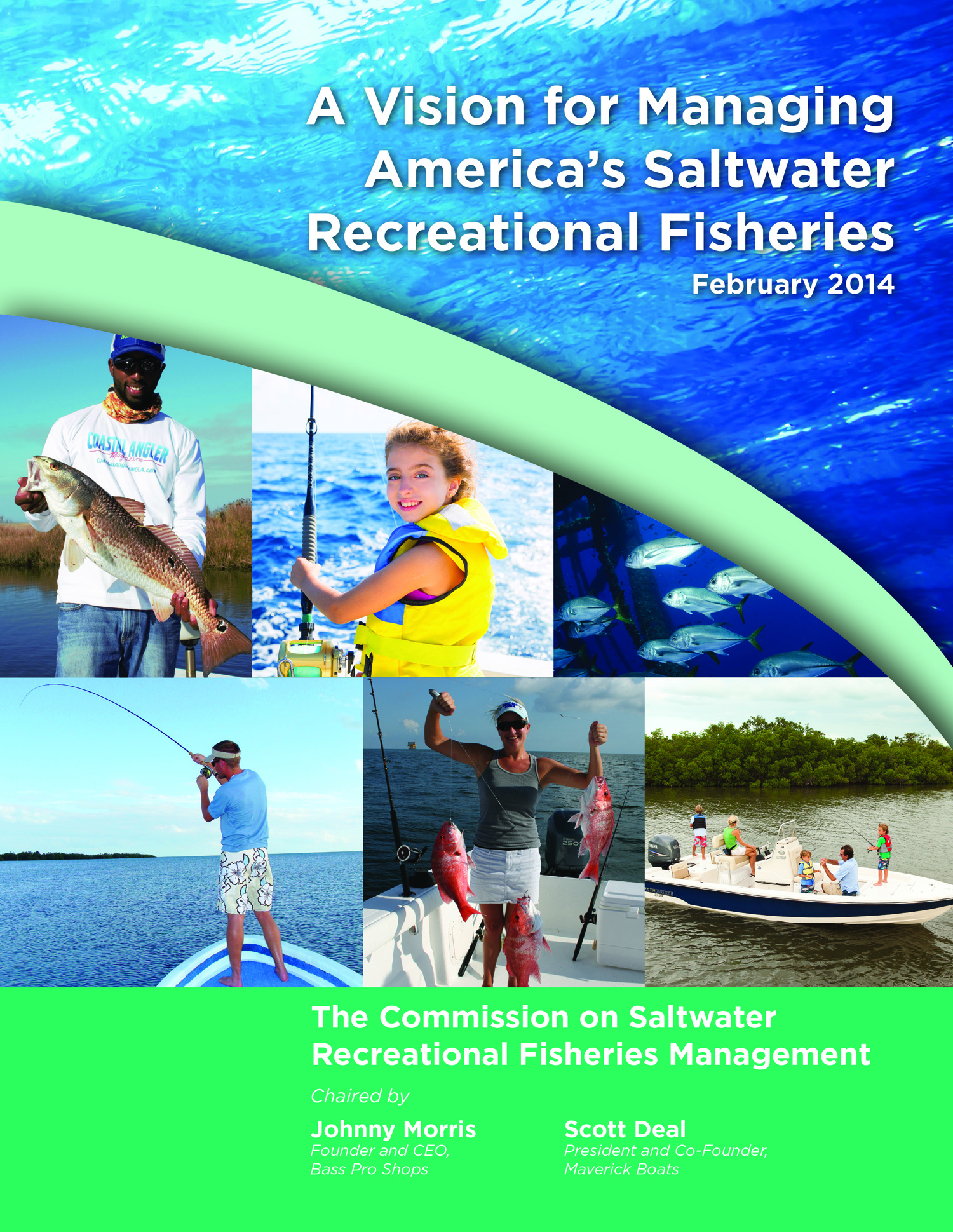Congress is moving forward quickly to revise the federal act that governs our nation’s marine resources. The sportfishing and boating industries, along with recreational saltwater anglers, are stepping up efforts to ensure that their economic, social and conservation priorities are well represented.
As the Magnuson-Stevens Fisheries Conservation and Management Act reauthorization advances on Capitol Hill, Bass Pro Shops Founder Johnny Morris and Maverick Boats President Scott Deal, leaders in the recreational angling industry and co-chairmen of the Commission on Saltwater Recreational Fisheries Management, will present A Vision for Managing America’s Saltwater Recreational Fisheries at the National Press Club on March 26, 2014, from 9:30–10:30 a.m.
The report, introduced to fishing and boating industry stakeholders on Feb. 13, 2014, at the Progressive Miami International Boat Show, is receiving critical acclaim as an important step toward commonsense saltwater fisheries management. Now, with strong support from the boating and fishing community, the commission is taking the report to the Hill to work with Congress as the Magnuson-Stevens Act reauthorization proceeds.
The Morris-Deal Commission assembled an expert panel of state and federal agency administrators, researchers, industry representatives and economists to promote a proactive vision for saltwater fisheries management. The current Magnuson-Stevens Act does not sufficiently address this important use of our nation’s public fishery resources. The commission’s report addresses recreational fishing specifically and differentiates the economic, social and conservation needs from those of commercial fishing.
According to NOAA Fisheries, 11 million Americans recreationally fish in saltwater each year. These sportsmen and -women contribute more than $70 billion to the nation’s economy and $1.5 billion for on-the-ground conservation of aquatic resources and habitats.
Who: Johnny Morris, founder and CEO, Bass Pro Shops
Scott Deal, president, Maverick Boats
When: Wednesday, March 26, 9:30–10:30 a.m. EDT
Where: Fourth Estate Room, The National Press Club
529 14th St. N.W., Washington, DC 20045
RSVP to Lauren Dunn, National Marine Manufacturers Association, at ldunn@nmma.org; or Mary Jane Williamson, American Sportfishing Association, at mjwilliamson@asafishing.org.











